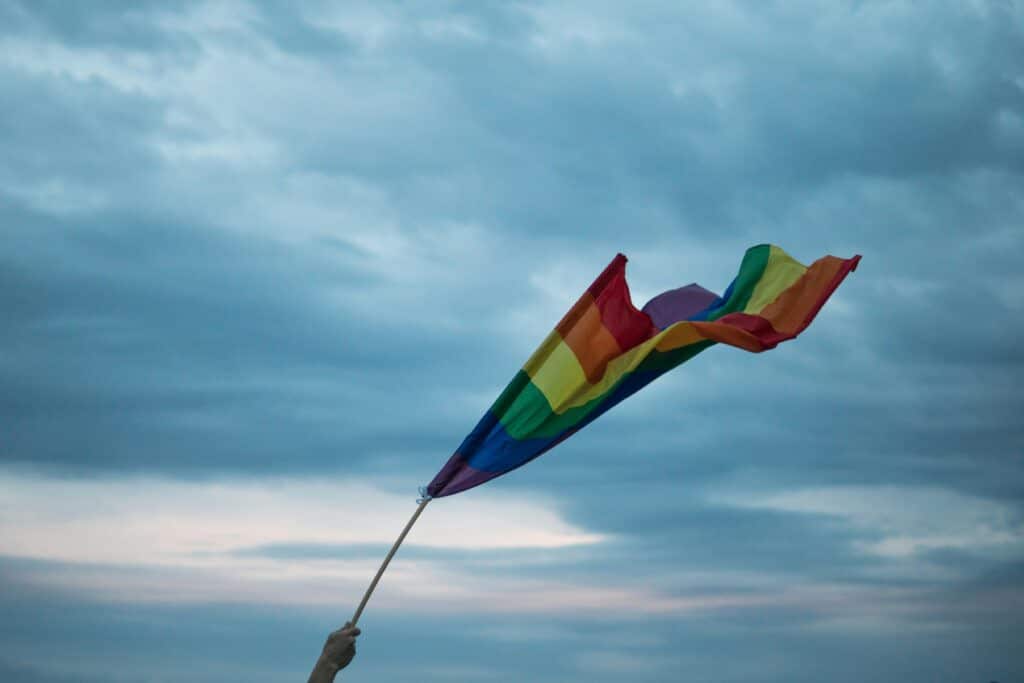Homophobia is a range of negative attitudes and feelings toward homosexuality or people who are identified or perceived as being lesbian, gay, bisexual, transgender or questioning (LGBT+). It can manifest in various forms, including prejudice, aversion, hatred, or discrimination, and can occur on personal, institutional, and societal levels.
At its core, homophobia is a bias or discrimination against individuals based on their sexual orientation or gender identity. This prejudice often stems from:
It can lead to:
Homophobia can have profound effects on individuals, contributing to:
Those on the receiving end of homophobic attitudes and actions may experience a range of emotional and psychological challenges, including internalized homophobia, where they may absorb and believe the negative messages about homosexuality and themselves.
In the United States, homophobia has been addressed through various social, legal, and educational measures. Legislation such as hate crime laws, anti-discrimination statutes, and the legalization of same-sex marriage has aimed to reduce and penalize homophobic behavior. However, despite these advances, homophobia persists, influenced by cultural, social, and personal factors.
Addressing homophobia in the U.S. requires a multifaceted approach. It involves:
It also requires legal and policy measures that protect the rights and dignity of LGBTQ+ individuals.
By confronting and challenging homophobia, society can move towards a more inclusive and accepting environment where all individuals, regardless of their sexual orientation or gender identity, are treated with respect and dignity.
Overcoming homophobia is not just a matter of changing laws but also transforming attitudes, beliefs, and behaviors at every level of society.
Homophobia can manifest in various forms, each with its distinct characteristics and implications. Here are some of the primary types of homophobia:
Understanding these various forms of homophobia is key for effectively addressing and combating discrimination, promoting equality, and fostering a more inclusive society for everyone, regardless of their sexual orientation or gender identity.
Homophobia in the United States remains a significant concern and is on the rise, despite advances in LGBTQ+ rights and growing social acceptance. This is starkly illustrated by the prevalence of homophobic attitudes and incidents.
According to a report on FBI 2022 hate crime statistics [1], incidents based on sexual orientation and gender identity account for a substantial portion of hate crimes in the U.S., underscoring the persistent challenge of homophobia and transphobia.
LGBTQI+ Targeted Crimes in the US were as follows:
Both categories recorded their highest totals in the past five years and increased by more than 10% since 2021. A significant increase of nearly 40% was observed in reported anti-transgender incidents (totaling 338) compared to 2021.
The Human Rights Campaign (HRC), reported [2] on the FBI statistics saying, attacks based on gender identity were up 32.9% from the prior year, and those based on sexual orientation were up 13.8%.
A November 2022 report by ACLED [3], showed that anti-LGBT+ mobilization—including demonstrations, political violence, and offline propaganda activity—had risen to its highest levels since it started collecting data for the US in 2020. Nearly 200 anti-LGBT+ incidents were reported, marking an increase of three times compared to 2021 and 12 times compared to 2020.
Educational institutions are not immune to this issue. The 2021 GLSEN National School Climate Survey [4] indicates that a majority of LGBTQ+ students report feeling unsafe at school due to their sexual orientation or gender identity. Many have experienced direct harassment or assault, and the presence of homophobic language and bullying is prevalent in school environments, affecting students’ well-being and academic performance.
In the workplace, the Human Rights Campaign’s 2023-24 Corporate Equality Index [5] highlights progress in corporate policies supporting LGBTQ+ employees, yet individual reports and surveys suggest that many still face discrimination, from microaggressions to overt exclusion or harassment. This discrimination not only impacts individuals’ career progression and mental health but also reflects broader societal attitudes that tolerate or perpetuate homophobia.
Most importantly, for the first time in HRC’s more than 40 year history, they officially declared a state of emergency for LGBTQ+ people in the U.S. They said that in 2023 LGBTQ+ people faced an unprecedented and dangerous spike in anti-LGBTQ+ legislative assaults in state houses all over the country. And more than 605 anti-LGBTQ+ bills have been introduced in 41 states and over 220 of those bills explicitly targeted the transgender community, particularly trans and nonbinary youth.
Health disparities also shed light on the impact of homophobia. LGBTQ+ individuals often report higher levels of stress, anxiety, and depression, linked to societal stigma and discrimination. Access to healthcare can be hindered by experiences of or fears about facing discrimination from medical professionals, which can deter individuals from seeking necessary care.
These numbers paint a picture of a society where, despite progress, homophobia continues to grow and affects the lives of LGBTQ+ individuals significantly. This underscores the necessity for continued vigilance, advocacy, education, and policy reforms to address and eradicate homophobia in all its forms.

Dealing with homophobia, whether you’re encountering it personally, witnessing it in your community, or seeing its effects on loved ones, requires a multifaceted approach grounded in education, empathy, and active allyship. Here are strategies to address and combat homophobia effectively:
Education is a powerful tool against ignorance, one of the roots of homophobia. Providing accurate information about LGBTQ+ issues can challenge stereotypes and misconceptions. Schools, workplaces, and communities can host workshops, training sessions, and discussions to raise awareness and foster understanding.
For those directly affected by homophobia, having a solid support network is crucial. This can include friends, family, support groups, or counseling services. Safe spaces where individuals can share their experiences and feelings without judgment are essential for emotional well-being.
When safe to do so, confronting homophobic remarks or actions can be a potent way to challenge prejudiced behavior. This doesn’t necessarily mean engaging in conflict but can involve calmly explaining why certain words or actions are harmful or offensive.
Understanding one’s rights is crucial in situations where homophobia escalates to discrimination or harassment. In many places, laws protect individuals from discrimination based on sexual orientation and gender identity. Reporting incidents and seeking legal recourse can be necessary steps in addressing severe cases of homophobia.
Whether in schools, workplaces, or communities, fostering an inclusive environment where diversity is celebrated can help reduce homophobia. This includes implementing policies that explicitly prohibit discrimination and encourage diversity and inclusion.
Allies play a critical role in combating homophobia. By standing in solidarity with LGBTQ+ individuals, allies can use their privilege to challenge homophobic behaviors and attitudes, support LGBTQ+ rights, and educate others.
For those impacted by homophobia, prioritizing mental and emotional well-being is vital. Engaging in activities that promote self-esteem, seeking professional help when needed, and connecting with others who affirm one’s identity can all contribute to resilience in the face of prejudice.
Addressing homophobia is a collective effort that requires individuals and communities to actively challenge prejudice, support those affected, and advocate for a more inclusive and accepting society.
Homophobia, the irrational fear, hatred, or prejudice against individuals who are lesbian, gay, bisexual, transgender, queer or questioning (LGBTQ+), can manifest in various environments, profoundly affecting individuals’ lives and well-being. Understanding how homophobia surfaces in different settings—such as workplaces, schools, and public spaces—can help us identify and combat it effectively.
The workplace should be an environment of professionalism and respect, yet for many LGBTQ+ individuals, it can be a space riddled with challenges due to homophobia. This can range from subtle forms, such as jokes or exclusion from social gatherings, to overt discrimination like harassment or unjustified career advancement blockages.
Such a hostile atmosphere not only undermines the affected individuals’ job satisfaction and mental health but also impacts their productivity and sense of belonging.
Companies and organizations must enforce anti-discrimination policies, promote diversity and inclusion training, and provide channels for employees to report homophobia safely and confidentially. By fostering a culture of acceptance and respect, workplaces can become environments where all employees, regardless of their sexual orientation or gender identity, can thrive.
Schools are fundamental in shaping individuals’ social and intellectual development, yet they can also be spaces where homophobia is prevalent. LGBTQ+ students may face:
Such experiences can lead to increased absenteeism, decreased academic performance, and significant mental health challenges.
To combat this, educational institutions must implement comprehensive anti-bullying policies that specifically address homophobia, incorporate LGBTQ+ inclusive curricula, and create supportive resources like LGBTQ+ clubs or counseling services. Educating students, teachers, and staff about LGBTQ+ issues can foster a more inclusive and safe environment for all students.
Homophobia is not confined to private spaces; it can also be encountered in various public settings, such as restaurants, parks, public transportation, or shopping centers. Instances might include receiving hostile looks, derogatory comments, or even facing physical violence.
Public homophobia not only affects the immediate victims but also sends a broader message of intolerance, potentially dissuading LGBTQ+ individuals from engaging in community life or accessing public services. Communities need to promote inclusivity through awareness campaigns, visible support for LGBTQ+ rights, and strict enforcement of anti-discrimination laws. Public places should be safe zones for everyone, free from fear of prejudice or harassment.
In all these contexts, the fight against homophobia requires a collective effort. It’s about challenging our own biases, supporting those who face discrimination, and working towards a society where respect and equality are not just ideals but lived realities. Recognizing and addressing homophobia in the various spheres of our lives is a crucial step toward building a more inclusive and empathetic world.
Addressing homophobia requires a concerted effort from all sectors of society to create inclusive and respectful environments where individuals can live authentically without fear of discrimination or violence. Whether in the workplace, educational institutions, or public spaces, each of us has a role to play in combating homophobia.
This involves not only challenging overt acts of discrimination but also addressing subtle biases and stereotypes that perpetuate inequality. Education, policy reform, and active allyship are crucial components in this fight against prejudice.
By fostering empathy, understanding, and respect for diversity, we can dismantle the barriers that homophobia creates. Ultimately, the goal is to cultivate a society where everyone, regardless of their sexual orientation or gender identity, is valued and afforded equal opportunities to thrive.
Embracing this challenge is not just about defending the rights of the LGBTQ+ community; it’s about affirming our collective humanity and moving toward a more just and compassionate world.
If you or a loved one are looking for a LGBTQ+ positive space to work on mental health issues, reach out to our Admissions team now at Corner Canyon Health Centers.
[1] Community Relations Service. US Department of Justice.October 2023. 2022 FBI Hate Crimes Statistics.
[2] Luneau, D. October 2023. FBI’s Annual Crime Report—Amid State of Emergency, Anti-LGBTQ+ Hate Crimes Hit Staggering Record Highs. Human Rights Campaign.
[3] Jones, S. and Kishi R. 2022. UPDATE | Fact Sheet: Anti-LGBT+ Mobilization on the Rise in the United States. ACLED.
[4] The 2021 National School Climate Survey. The Experiences of LGBTQ+ Youth in Our Nation’s Schools. GLSEN.
[x] Corporate Equality Index 2023-2024. Rating Workplaces on Lesbian, Gay, Bisexual, Transgender and Queer Equality. Human Rights Campaign.
